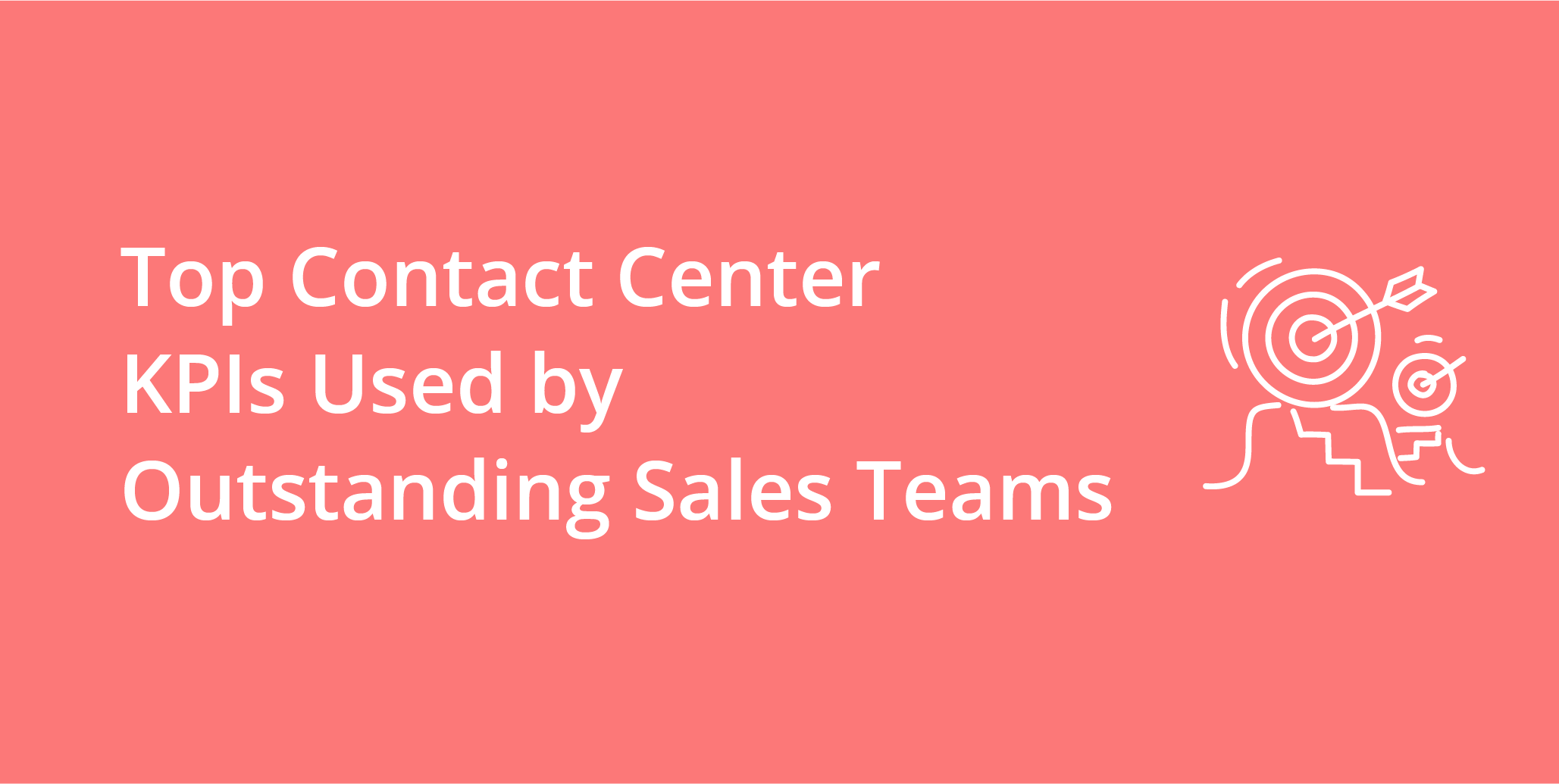Contact centers are where customers engage with your company on the most personal level. Contact centers are multifaceted, communicating with customers over the phone, through email, support tickets, social media, and other channels. They’re one of the most vital parts of any company, and improving efficiency and effectiveness in your contact center should be a priority.
Great contact center leadership starts with always being aware of what’s happening in each department. But with so many moving parts, how can contact center managers and sales managers keep on top of what’s working well in the call center and what isn’t?
Contact Center KPIs
We boil things down to key performance indicators (KPIs) and metrics. These call center KPIs give contact center managers numerical values that sum up the performance and productivity of key elements of the department that lead to increased customer satisfaction.
KPIs can be high-level, offering an overview of the department as a whole. They can also be more focused and offer information on how particular teams, processes, or individual agents are performing.
In these call center management tips, we’ll look at some of the most common KPIs used in contact centers and why you might want to begin using them to measure the performance of your team.

Contact Center Operational Scores
Operational metrics help you identify trends in your call center, such as peak hours, staff requirements, and seasonal changes in the number of calls you receive. They’re the most useful metrics for understanding how much your contact center is costing your business and how much staffing is required.
Some of the most useful contact center operational metrics are:
- Cost per call (CPC)—A high-level idea of how much each call is costing the company, on average. It’s a useful stat for recognizing how cost-effective the contact center is.
- Peak hour traffic—Metrics on when you get the highest volume of calls on average help you plan staff shifts.
- Calls handled—The total number of calls an agent, team, or call center has fielded over a period.
- Average call length—This helps for forecasting how long you can expect customers to wait in queues based on the number of staff you have available.
- Repeat calls—Customers needing to call back multiple times suggests they didn’t get the result they wanted the first time, so you generally want this metric to be low.
Though the focus of these metrics is on phone calls, they also commonly make sense for other channels in your contact center, too. You want to record the cost per email, peak hours of social media interaction, and the number of support tickets handled, too, for instance, as it gives you insights into which channels are working well and which need tweaking.
Customer Satisfaction Score (CSAT)
Customer satisfaction (CSAT) is an important high-level statistic for a contact center. It states in numerical terms how satisfied a customer is with the products and services they’ve bought from your company, and the customer service they’ve received.
The most common way to get CSAT scores from customers is to ask them about their experience in an optional survey. You can get information on each element of your business by asking customers how satisfied they were with specific portions of the service they’ve received.
Pooling together the satisfaction ratings you’ve received from multiple customers will give you an average CSAT score for each part of your business, letting you know where you need to focus your efforts the most.

Net Promoter Score (NPS)
Net promoter score (NPS) is a gauge of how loyal a customer is to your company and how likely they are to be a brand ambassador. You typically get this score by asking the question outright in a customer satisfaction survey. NPS can be used to help understand the types of customers you have and the positive and negative effects customer satisfaction is having on customer outreach.
Call Initiation Scores
Customers become frustrated when they want to communicate with your company but cannot. So, contact centers must focus on metrics that show how long customers are waiting to get the result they want and find ways to reduce this time. The most relevant metrics to consider are:
- Active waiting calls—A metric of how many inbound calls are waiting to be answered.
- Response time—How long it takes for a customer’s inquiry or issue to be answered by an agent.
- Call abandonment rate—The percentage of calls that are abandoned before a customer speaks to a representative.
Initiation scores can also be used for your other channels of contact. Active waiting queues are just as relevant for emails and support tickets. You also want to set a goal for first response times for other channels. For example, you could set response time goals as such:
- Phone call—20 seconds
- Live chat—40 seconds
- SMS—60 seconds
- Twitter—30 minutes
- Facebook—1 hour
- Email—2 hours
Agent Productivity Scores
Agent productivity scores can be used to gauge how well your individual agents and teams are performing. It’s often difficult to see exactly what each person brings to the team, so be wary of looking at these numbers in a vacuum.
Some of the most important agent productivity scores to be considered are:
- Average speed of answer—The average amount of time it takes the agents to answer a call.
- Average handle time—The average amount of time an agent spends on calls.
- Agent utilization rate—The percentage of time an agent is fielding calls during their work hours.
Agent productivity scores in a contact center must also take into account agents that are working on multiple channels. Agents often need to field calls, answer emails, and respond to social media posts, all at the same time.
These metrics give you an excellent idea of how your contact center is performing. Each business is different and you may want to include metrics specific to your industry or the products and services you offer. This way, you can continually improve the performance of your contact center where it matters most to your business.



